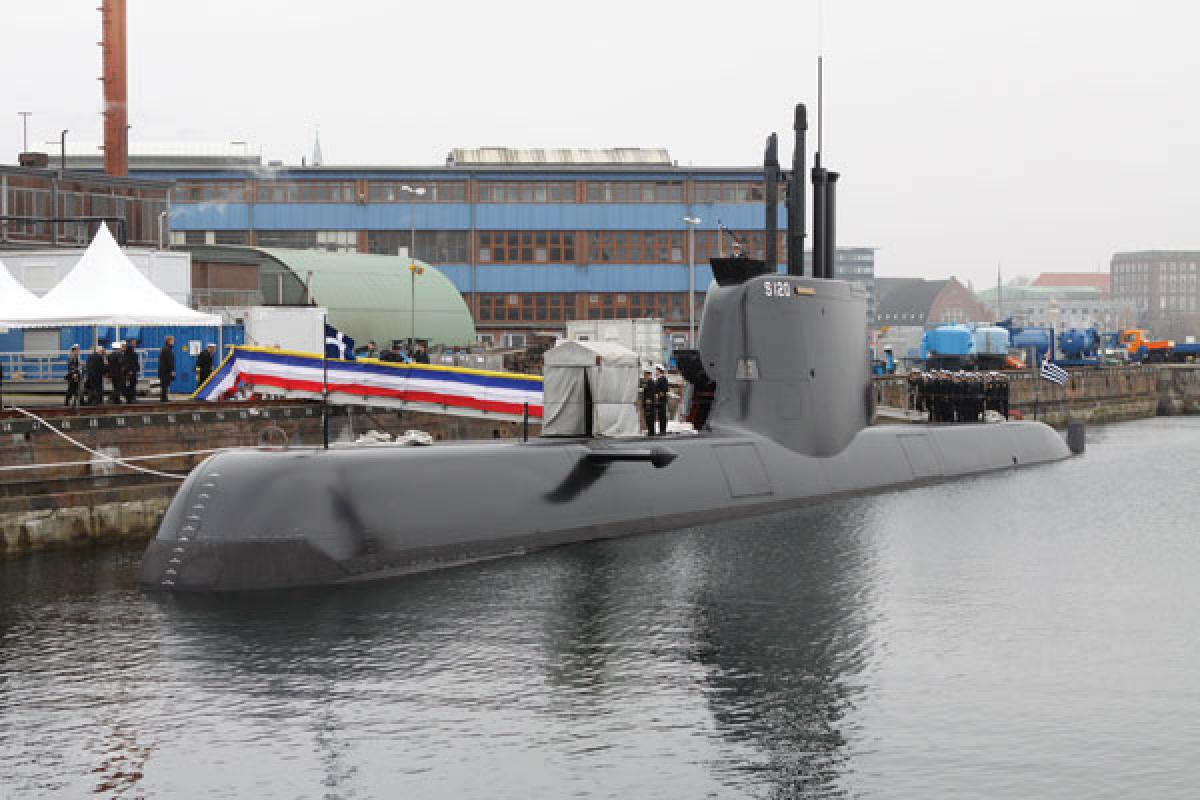Greece has finally accepted delivery of the German-built submarine Papanikolis, its first Type 214 boat. The move reverses the controversial Greek decision to accept only domestically produced submarines of the class. The Papanikolis, commissioned into the Hellenic Navy on 2 November 2010, actually was completed by Howaldtswerke-Deutsche Werft GmbH shipyard several years earlier, but was rejected by Greece because of what it claimed were technical difficulties. When the boat was certified to be in working order, however, analysts began to perceive the refusal as a Greek funding problem rather than a German technical one. Once the contract dispute was resolved, the submarine sailed for Greece, arriving at her new homeport of Salamis in time to welcome the New Year. Three sister submarines are being built in Greece and two additional units of the class have been ordered. The Type 214 class represents one of the most advanced submarines in the world. Fitted with an air-independent propulsion system, the boats are able to remain submerged for extended periods. Each displaces 1,950 tons submerged and is operated by a crew of 27.
New Zealand recently completed modernization of its two Anzac-class frigates under phase one of the Navy’s Platform Systems Upgrade (PSU) program. HMNZS Te Mana, pictured here in early 2010, finished her seven-month refit in December, while older sister Te Kaha completed her upgrade in February 2010. Under the PSU program, New Zealand’s frigates received upgraded diesel engines that allow for a higher cruising speed of 21.5 knots, permitting more fuel-efficient voyages. Other improvements include a reduction in the overall quarterdeck area, creating additional internal space and increasing reserve buoyancy, thus enhancing the frigates’ ability to withstand damage. The warships also have been fitted with new versions of the Phalanx close-in weapons system, which was upgraded to provide increased capability against littoral-warfare targets such as helicopters and high-speed surface threats. Further improvements are planned for the future, including the addition of revamped heating, ventilation, and air-conditioning systems.
The U.S. Navy recently announced a homeport change for the USS Nimitz (CVN-68). In December the aircraft carrier, pictured here entering dry dock, began a yearlong maintenance period, called a Docking Planned Incremental Availability, to upgrade combat, self-defense, navigation, potable-water, and other on-board systems. The work will take place at Puget Sound Naval Shipyard and Intermediate Maintenance Facility in Bremerton, Washington, and is expected to be completed by 2012. Rather than return the Nimitz to her previous homeport of San Diego, California, the Navy has decided to homeport the ship instead at Naval Station Everett, Washington, once the upgrade is finished. This saves money and also strategically disperses aircraft carriers on the West Coast. The homeport change coincides with the upcoming departure from Everett of the USS Abraham Lincoln (CVN-72), which is scheduled to leave the base early in Fiscal Year 2012 to begin her four-year refueling and complex overhaul at Hampton Roads, Virginia.




